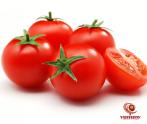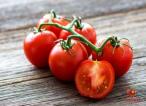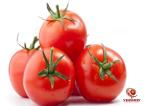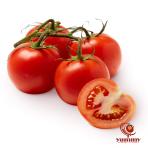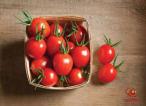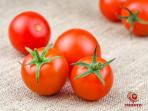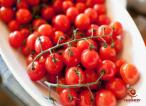Purchase and price of moldy tomato paste types
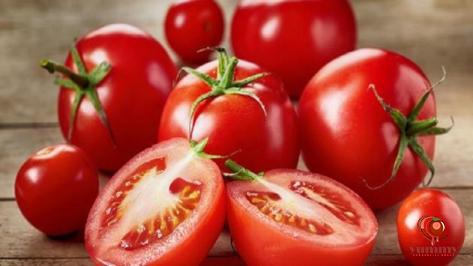
Tomato paste is a staple ingredient in many kitchens around the world, adding depth and richness to countless dishes. However, when not stored properly, tomato paste can fall victim to mold growth, turning it into a potential health hazard. In this comprehensive guide, we will explore the causes of mold growth in tomato paste, the risks associated with consuming moldy tomato paste, how to prevent mold growth, and the proper ways to dispose of contaminated tomato paste.

.
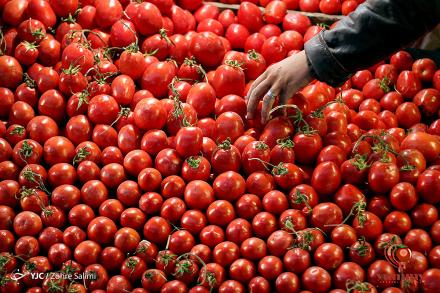 **Causes of Mold Growth in Tomato Paste:** Mold is a type of fungus that thrives in warm, damp environments with organic material to feed on. Tomato paste, being a concentrated form of tomatoes, provides an ideal breeding ground for mold when exposed to moisture and air. Common causes of mold growth in tomato paste include improper storage conditions, such as leaving the jar open or not sealing it tightly, as well as storing the paste in a warm and humid environment. Furthermore, using a contaminated spoon to scoop out tomato paste can introduce mold spores into the jar, accelerating the growth of mold. Once mold spores have taken hold in the paste, they can rapidly multiply and spread, turning the once vibrant red paste into a fuzzy, greenish-black mass. **Risks of Consuming Moldy Tomato Paste:** Consuming moldy tomato paste can pose serious health risks, as mold produces mycotoxins that can cause a range of adverse reactions in the human body. Mycotoxins are toxic compounds produced by certain molds, and their ingestion can lead to symptoms such as nausea, vomiting, diarrhea, and allergic reactions in susceptible individuals. In addition, moldy tomato paste can also harbor harmful bacteria and other pathogens that thrive in moldy environments. These pathogens can cause foodborne illnesses, such as salmonella and E. coli infections, leading to gastrointestinal distress and potentially severe complications, especially in young children, the elderly, and individuals with weakened immune systems. **Preventing Mold Growth in Tomato Paste:** To prevent mold growth in tomato paste, proper storage and handling practices are essential. After opening a new jar of tomato paste, always ensure that it is tightly sealed after each use to prevent moisture and air from entering the jar. Store the jar in a cool, dry place away from direct sunlight and sources of heat, such as the stove or oven. Using clean utensils, such as a spoon or spatula, to scoop out tomato paste can also help minimize the risk of introducing mold spores into the paste. Avoid double-dipping utensils into the jar, as this can contaminate the entire contents with mold spores from a previous use. Additionally, refrigerating opened jars of tomato paste can extend their shelf life and slow down the growth of mold.
**Causes of Mold Growth in Tomato Paste:** Mold is a type of fungus that thrives in warm, damp environments with organic material to feed on. Tomato paste, being a concentrated form of tomatoes, provides an ideal breeding ground for mold when exposed to moisture and air. Common causes of mold growth in tomato paste include improper storage conditions, such as leaving the jar open or not sealing it tightly, as well as storing the paste in a warm and humid environment. Furthermore, using a contaminated spoon to scoop out tomato paste can introduce mold spores into the jar, accelerating the growth of mold. Once mold spores have taken hold in the paste, they can rapidly multiply and spread, turning the once vibrant red paste into a fuzzy, greenish-black mass. **Risks of Consuming Moldy Tomato Paste:** Consuming moldy tomato paste can pose serious health risks, as mold produces mycotoxins that can cause a range of adverse reactions in the human body. Mycotoxins are toxic compounds produced by certain molds, and their ingestion can lead to symptoms such as nausea, vomiting, diarrhea, and allergic reactions in susceptible individuals. In addition, moldy tomato paste can also harbor harmful bacteria and other pathogens that thrive in moldy environments. These pathogens can cause foodborne illnesses, such as salmonella and E. coli infections, leading to gastrointestinal distress and potentially severe complications, especially in young children, the elderly, and individuals with weakened immune systems. **Preventing Mold Growth in Tomato Paste:** To prevent mold growth in tomato paste, proper storage and handling practices are essential. After opening a new jar of tomato paste, always ensure that it is tightly sealed after each use to prevent moisture and air from entering the jar. Store the jar in a cool, dry place away from direct sunlight and sources of heat, such as the stove or oven. Using clean utensils, such as a spoon or spatula, to scoop out tomato paste can also help minimize the risk of introducing mold spores into the paste. Avoid double-dipping utensils into the jar, as this can contaminate the entire contents with mold spores from a previous use. Additionally, refrigerating opened jars of tomato paste can extend their shelf life and slow down the growth of mold.
..
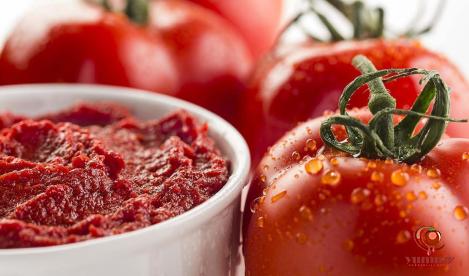 **Proper Disposal of Moldy Tomato Paste:** If you discover mold growth in a jar of tomato paste, it is crucial to dispose of it properly to prevent the spread of mold spores and mycotoxins. Do not attempt to salvage any uncontaminated portions of the paste, as mold spores can quickly spread throughout the jar and contaminate the entire contents. To dispose of moldy tomato paste, seal the jar in a plastic bag to contain any spores and prevent them from spreading. Then, discard the sealed jar in the trash, making sure it is out of reach of children and pets. Avoid rinsing the moldy paste down the sink, as this can contaminate the water supply and lead to further issues. **Conclusion:** In conclusion, mold growth in tomato paste is a common issue that can lead to serious health risks if consumed. By understanding the causes of mold growth, the risks associated with consuming moldy tomato paste, and following proper storage and handling practices, you can prevent mold growth and ensure the safety of your food. In the event that you encounter moldy tomato paste, it is essential to dispose of it correctly to prevent further contamination. Stay vigilant, practice good kitchen hygiene, and enjoy your tomato-based dishes with peace of mind. **Additional Tips for Handling Tomato Paste:** In addition to the prevention and proper disposal of moldy tomato paste, there are a few more tips to ensure the quality and safety of your tomato paste: 1. **Check the Expiration Date:** Always check the expiration date on the jar of tomato paste before purchasing or opening it. Using expired tomato paste can increase the chances of mold growth and spoilage. 2. **Transfer Leftover Tomato Paste:** If you have leftover tomato paste after opening a new jar, transfer it to an airtight container and refrigerate it for longer shelf life. This can help prevent mold growth and maintain the freshness of the paste. 3. **Use Acidic Ingredients:** Adding acidic ingredients, such as lemon juice or vinegar, to tomato-based dishes can help inhibit mold growth. The low pH of acidic ingredients creates an environment that is less hospitable to mold and bacteria.
**Proper Disposal of Moldy Tomato Paste:** If you discover mold growth in a jar of tomato paste, it is crucial to dispose of it properly to prevent the spread of mold spores and mycotoxins. Do not attempt to salvage any uncontaminated portions of the paste, as mold spores can quickly spread throughout the jar and contaminate the entire contents. To dispose of moldy tomato paste, seal the jar in a plastic bag to contain any spores and prevent them from spreading. Then, discard the sealed jar in the trash, making sure it is out of reach of children and pets. Avoid rinsing the moldy paste down the sink, as this can contaminate the water supply and lead to further issues. **Conclusion:** In conclusion, mold growth in tomato paste is a common issue that can lead to serious health risks if consumed. By understanding the causes of mold growth, the risks associated with consuming moldy tomato paste, and following proper storage and handling practices, you can prevent mold growth and ensure the safety of your food. In the event that you encounter moldy tomato paste, it is essential to dispose of it correctly to prevent further contamination. Stay vigilant, practice good kitchen hygiene, and enjoy your tomato-based dishes with peace of mind. **Additional Tips for Handling Tomato Paste:** In addition to the prevention and proper disposal of moldy tomato paste, there are a few more tips to ensure the quality and safety of your tomato paste: 1. **Check the Expiration Date:** Always check the expiration date on the jar of tomato paste before purchasing or opening it. Using expired tomato paste can increase the chances of mold growth and spoilage. 2. **Transfer Leftover Tomato Paste:** If you have leftover tomato paste after opening a new jar, transfer it to an airtight container and refrigerate it for longer shelf life. This can help prevent mold growth and maintain the freshness of the paste. 3. **Use Acidic Ingredients:** Adding acidic ingredients, such as lemon juice or vinegar, to tomato-based dishes can help inhibit mold growth. The low pH of acidic ingredients creates an environment that is less hospitable to mold and bacteria.
…
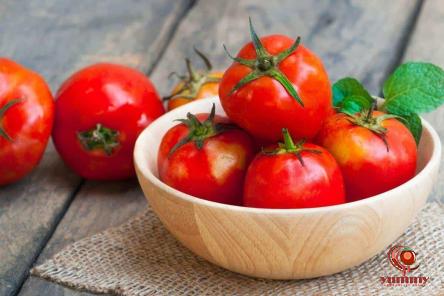 4. **Inspect Before Use:** Before using tomato paste in a recipe, always inspect it visually and check for any signs of mold growth or unusual discoloration. If you notice any abnormalities, discard the paste immediately. 5. **Store in Small Portions:** If you frequently use small amounts of tomato paste, consider portioning it into ice cube trays and freezing the portions for later use. This can help minimize waste and prevent the paste from spoiling. By following these additional tips and incorporating good kitchen practices, you can enjoy the flavor and versatility of tomato paste in your culinary creations while minimizing the risk of mold growth and contamination. **Final Thoughts:** Moldy tomato paste is not only unappetizing but also poses health risks that should not be taken lightly. Understanding the causes of mold growth, the risks associated with consuming moldy tomato paste, and the importance of proper storage and handling practices is crucial for maintaining food safety in your kitchen. By taking proactive measures to prevent mold growth, such as proper sealing, storing in a cool and dry place, and avoiding cross-contamination, you can enjoy the benefits of tomato paste without the worry of potential mold contamination. In the event of encountering moldy tomato paste, swift and proper disposal is essential to mitigate further health risks and prevent the spread of mold spores. Remember, food safety is paramount in maintaining a healthy kitchen environment. By staying informed, practicing good hygiene, and implementing preventive measures, you can ensure that your tomato paste and other food items remain safe and enjoyable for consumption.
4. **Inspect Before Use:** Before using tomato paste in a recipe, always inspect it visually and check for any signs of mold growth or unusual discoloration. If you notice any abnormalities, discard the paste immediately. 5. **Store in Small Portions:** If you frequently use small amounts of tomato paste, consider portioning it into ice cube trays and freezing the portions for later use. This can help minimize waste and prevent the paste from spoiling. By following these additional tips and incorporating good kitchen practices, you can enjoy the flavor and versatility of tomato paste in your culinary creations while minimizing the risk of mold growth and contamination. **Final Thoughts:** Moldy tomato paste is not only unappetizing but also poses health risks that should not be taken lightly. Understanding the causes of mold growth, the risks associated with consuming moldy tomato paste, and the importance of proper storage and handling practices is crucial for maintaining food safety in your kitchen. By taking proactive measures to prevent mold growth, such as proper sealing, storing in a cool and dry place, and avoiding cross-contamination, you can enjoy the benefits of tomato paste without the worry of potential mold contamination. In the event of encountering moldy tomato paste, swift and proper disposal is essential to mitigate further health risks and prevent the spread of mold spores. Remember, food safety is paramount in maintaining a healthy kitchen environment. By staying informed, practicing good hygiene, and implementing preventive measures, you can ensure that your tomato paste and other food items remain safe and enjoyable for consumption.


 Phone number:
Phone number:  WhatsApp Response:
WhatsApp Response:


